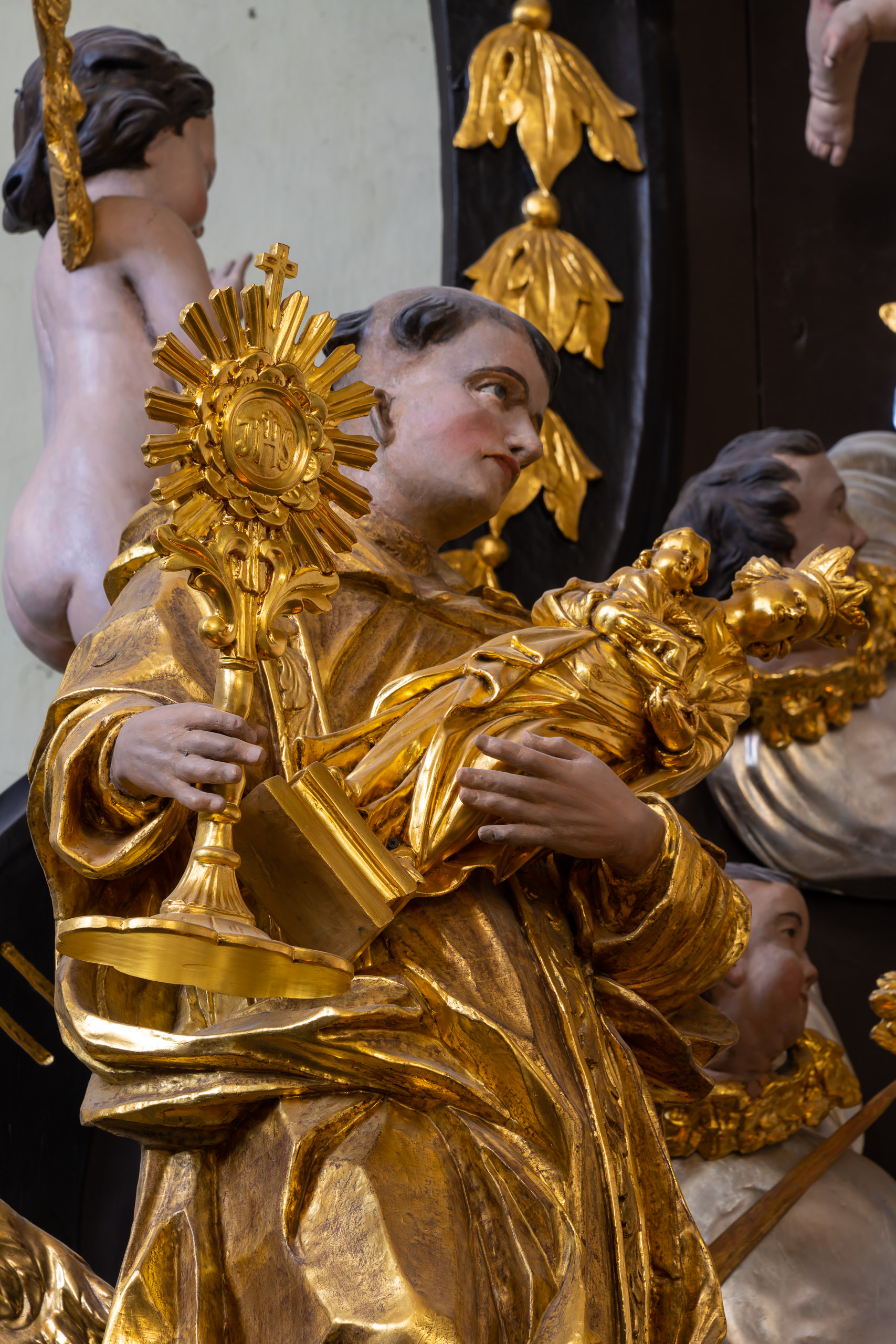
Saint Hyacinth of Poland – the first Polish Dominican
- Location
- Altar of Our Lady of the Rosary
- Description
- He is one of the most popular Polish saints and one of the most influential people in the history of the Dominican Order. He is the first Dominican in Poland. He was born in 1183 at Kamień, Silesia, near Opole. He came from a rich and influential knightly family of Odrowąż who cared about preserving the rich Christian tradition. Together with his relative Czesław he received a thorough education at the Cracow school. Having acquired a solid foundation, in the years 1209-1214 they continued their studies abroad: in Prague, Paris and Bologna. After returning to Cracow, they were ordained priests. They both accompanied Bishop of Cracow Wincenty Kadłubek on his journey to Rome. At the same time, the Pope was visited by Dominic Guzman from Spain who founded a new preaching order - Ordo Praedicatorum. Hyacinth and Czeslaw came into contact with innovative missionary methods and decided to join the Dominicans. After a year of novitiate in Rome, they were sent to their lands. In 1221 they reached Cracow where the first Dominican monastery was organised in the Church of the Holy Trinity. This was followed by monasteries in Sandomierz and Wrocław (1226) and in Gdańsk in 1227 as the fourth oldest convent. In Poland, the monasteries of medieval origin also include the centres in Lublin and Poznań. In 1228, Hyacinth went to Kievan Rus’. In 1240, during the attack of the Tartar army on Kiev, St. Hyacinth was celebrating mass in one of the churches. Legend has it that during his evacuation he heard a voice coming from the stone statue of Mother of God. When leaving the church, he eventually took with him a tin with consecrated bread and the statue of Our Lady. Because of that, St. Hyacinth is mainly depicted with these two attributes, a monstrance with the Blessed Sacrament and a statue of Our Lady in his hands. The saint spent the last years of his life in Cracow. The day before his death, he left his confreres an oral testament, instructing them to cultivate humility, mutual charity and a life of voluntary poverty. The saint died on August 15, 1257, which is the solemnity of the Assumption of the Blessed Virgin Mary. He was buried in the Church of the Holy Trinity, where his remains rest to this day. St. Hyacinth's canonization was completed in 1594 under Pope Clement VIII. He was the seventh Dominican and the fifth Pole to be raised to the altars.